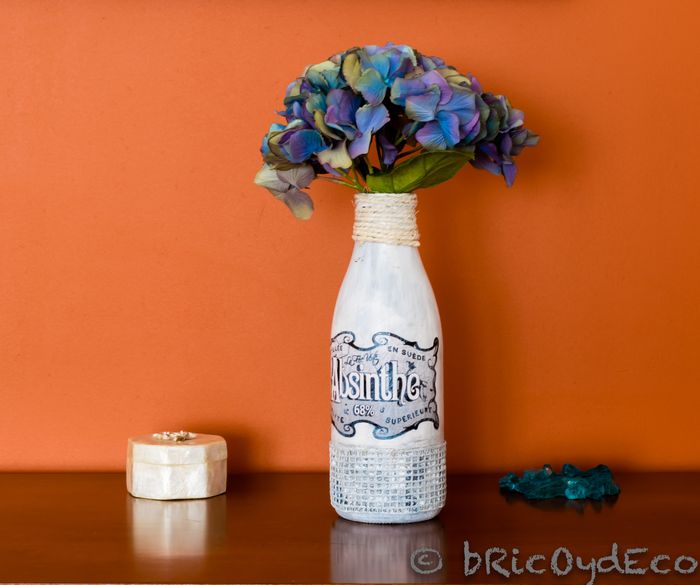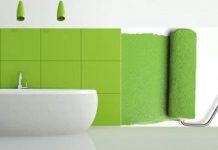

Do you want to paint a piece of furniture and you don’t know if you should apply primer beforehand? To answer your questions, I have prepared a guide based on what has worked best for me after several years renovating furniture. I hope it will be useful to you and that it will help you decide when to apply. primer before painting.
“I want to renew my old furniture, do I have to apply primer?” Without a doubt, it is one of the queries I receive most frequently. For this reason, I wanted to update this article based on my experience renovating and tuning furniture and objects.
What is the primer and how does it work?
technically a primer is a previous coating which is applied on wood, melamine, glass, metal, etc. to facilitate the adhesion of the paint. In addition, the primer acts as a barrier against corrosion and humidity and saves paint due to its sealing and pore-filling effect.
So that you can better understand how it works, think of a Velcro strip. Its part with hooks needs the part with fiber to form a joint. In the same way, the primer makes the paint “hook” to the furniture or object that we want to paint.

Are all primers the same?
Nope. There are different types of primer depending on the basis, the most common being:
- Water-based primer. It is diluted with water.
- Solvent based primer. It is diluted with solvent.
- Epoxy primer recommended for exteriors and very bright surfaces. It is diluted with solvent.
It is recommended that the primer has the same base as the area that we are going to paint. If this is not possible, you will have to wait a minimum of 24 hours before applying the paint. Otherwise, cracking problems and incompatibilities can occur.
What surfaces need primer?
Depends on the type of paint that you are going to use, but in general:
- New and very smooth surfaces such as metal or glass
- Glossy, glazed or varnished surfaces
- Materials that require protection against oxidation and humidity or that are going to be outdoors
- Porous surfaces such as wood to prevent problems with tannins, etc.

How can I make a homemade water-based primer?
There are several recipes to make your own homemade primer. I have personally used a couple of recipes that have worked quite well for me.
Homemade plaster primer recipe
Ingredients
- 2 tablespoons of plaster of paris powder
- 2 tablespoons of warm water
- 200 grams of carpenter’s glue
Preparation
- Pour the water over the plaster little by little until it dissolves.
- Add the carpenter’s glue and stir until the mixture is smooth and lump-free.
In this link you can see an example of an application to paint a melamine piece of furniture.
Homemade primer recipe with putty
Ingredients
Preparation
Pour the water over the putty until you get the consistency of paint. In this link you will find an example of use to prime a glass bottle.

From the theory to the practice…
The first time I painted a piece of furniture it was a melamine bookcase with synthetic enamel, then it was the turn of another bookcase for which I also used synthetic enamel but in spray. In both cases I did not use a primer and I had no adhesion problems, nor did the paint chip.
Usually, synthetic or solvent-based enamels have good adhesion on surfaces such as melamine, glass, metal or plasticalthough before painting directly on them, a series of considerations must be taken into account:
- If the piece of furniture or object is going to be exposed to outdoor Yes, we must apply a previous primer.
- If it will be a piece of furniture continued use such as a table or the shelves of a bookstore, it is also advisable to apply a previous primer.
On the other hand, I always use primer to paint over varnished wood or high-gloss surfaces (high gloss melamine for example). Otherwise you risk the paint not adhering properly and it could come off.

My recommendation when in doubt about using primer before painting, is to do the “cotton test”. This test consists of applying the paint to a non-visible area of the furniture (the inside of a drawer or door, for example) and waiting:
- If the paint bubbles or cracks, it will need to be pre-primed.
- If after a few days we scratch with the nail and the paint comes off, it will need a primer.
Chalk paint, the exception?
Chalk paint or chalk paint does not need prior primer on melamine, wood, metal, etc., as it contains adhesive and primer components. In this link you will find the homemade chalk paint recipe.
However, the fact of applying a previous primer will make us save paint since the first layer is the one that absorbs the most amount. In addition, there are other situations in which it is convenient to apply primer before painting with chalk paint.

Finally, I would like to point out that skipping the primer step when painting our furniture can save us time and money at first. However, it can also mean the opposite. Especially if we have not done a previous test on the material, or we do not take into account the use that we are going to give the furniture.
Do you normally apply pre-primer when painting furniture and objects? Have you ever had problems with paint adherence? I hope this article has clarified your doubts when it comes to apply a primer before painting a piece of furniture or object.
You can find more DIY tricks and tutorials at Thank you very much for commenting and sharing!
[elfsight_youtube_gallery id=»1″]



